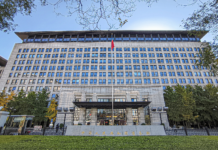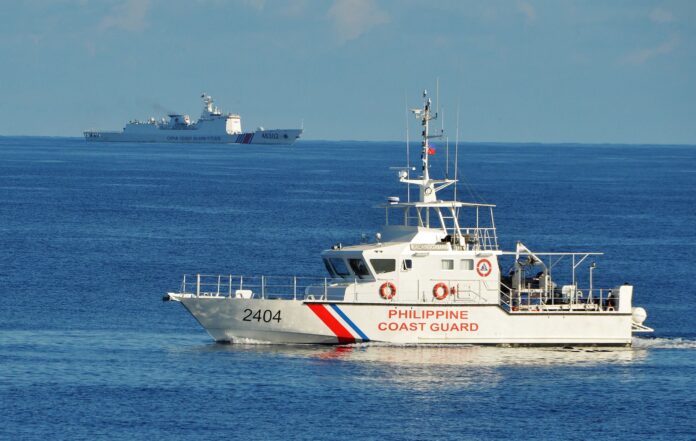Beneath the South China Sea’s tranquil waters lies a complex web of competing claims, economic interests and security concerns. As China grows in power, so does the importance of the South China Sea.
The South China Sea is a water body located in South-East Asia which connects the Pacific Ocean and the Indian Ocean. It is one of the maritime routes, through which passes one-third of the world trade. The Strait of Malacca, one of the chokepoints, is also situated in the South China Sea.
The Malacca dilemma has urged China to look for alternative routes. The South China Sea is home to eight countries: China, the self-governing island of Taiwan, Philippines, Vietnam, Malaysia, Brunei, Indonesia and Singapore. All these countries have their national claims and interests in the South China Sea that collide with each other, sometimes resulting in military conflicts.
The maritime importance of the South China Sea is undeniable. Its access to all countries is pivotal for the global lanes of communication. But the USA and China need to manage the strategic competition being unravelled in the South China Sea. In the nuclear age, both countries need to carefully navigate the spectrum to avoid any escalation. Moreover, China also needs to work on a mechanism to resolve its territorial disputes. It can use the platforms like ASEAN and the Asia Pacific Forum to reach an understanding with the disputing parties
The People’s Republic of China has a claim almost all over the South China Sea along with the islands and rocks present in it. China makes its claim on the basis of a nine-dash line. The nine dash line are the nine dashes or dots present on historical maps of China outlining its territorial waters. It encompasses 90 percent of the South China Sea, conflicting the exclusive economic zones (EEZ) of other countries. The South China Sea is vital to China due to its maritime importance. One-third of the global trade traverses through it. Like a great power, China wants to control the passageway and wants other countries to defer to it. Additionally, it has claims over the rocks and islands that lie on the maritime route. The South China Sea is also rich in oil and gas reserves. By having a de facto control over the waterway, China could exploit these resources.
China makes its claim over the Spratly Islands, Paracel islands and Scarborough Shoals. The Spratly Islands and Paracel Islands are believed to be rich in oil and gas resources. It is an attractive hub for fishing resources.
Interestingly, these islands provide an ideal location for military installations. China could increase its power projection capabilities. Additionally, China has territorial claims over these islands, which makes it a matter of national prestige. Vietnam also has its claim over these islands. Both countries had military conflicts over Paracel Islands and Spratty Islands in 1974 and 1988 respectively.
Now, China effectively controls the Paracel Islands, while different countries control different parts of the Spratly Islands. China and the Philippines also had a military standoff in 2012 over the Scarborough Shoals. China has de facto control over the shoals with constant coastal guard presence in the region.
With increased Chinese assertiveness in the region, the USA has also sought to counter balance the rising Chinese influence in the region. In 2011, Washington announced its pivot to Asia. The USA has a military alliance, the National Defense Treaty of 1951, with the Philippines. The alliance commits the USA to come to its rescue in the event of an external attack. Though there is no formal military alliance between Vietnam, both countries have increased their defense cooperation in recent years. It is symbolized by joint military exercises and the lifting of the US arms embargo in 2016. Moreover, the US conducts Freedom of Navigation Operations (FONOPs) to protect the sea lanes of communication.
In October 2024, the US conducted the exercise “Sama-Sama”. The Philippines, Japan, Canada and Australia participated in the exercises. The purpose of all this is to act as a counterweight to the increasing Chinese assertiveness in the region, and protect USA’s vital interests in the region.
Both the USA and China have their interests in the Taiwan dispute. China claims Taiwan as its territory, drawing its claim from the “One-China Policy”. It does not rule out the use of force to reclaim Taiwan. The USA does not have formal relations with Taiwan, but provides defense equipment and technology under the Taiwan Relations Act. The USA has maintained a policy of strategic ambiguity over Taiwan, which gives it a room for manoeuvre. In the final meeting between President Xi and outgoing president Biden, the USA has reiterated its respect for the One-China policy, with Beijing as the formal government.
The maritime importance of the South China Sea is undeniable. Its access to all countries is pivotal for the global lanes of communication. But the USA and China need to manage the strategic competition being unravelled in the South China Sea. In the nuclear age, both countries need to carefully navigate the spectrum to avoid any escalation. Moreover, China also needs to work on a mechanism to resolve its territorial disputes. It can use the platforms like ASEAN and the Asia Pacific Forum to reach an understanding with the disputing parties.






















